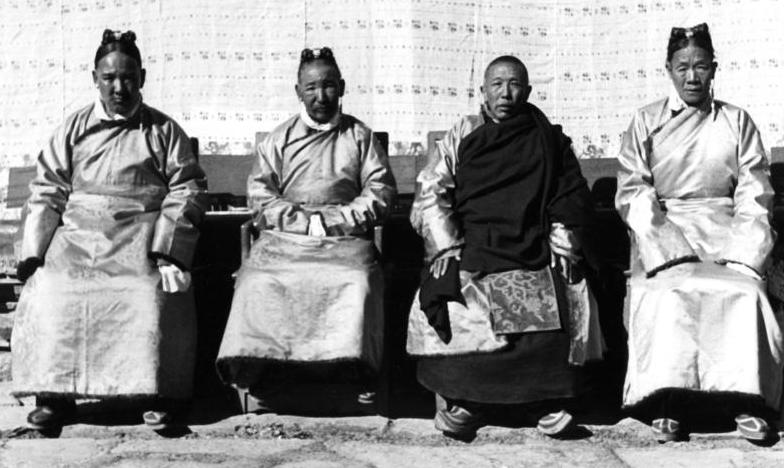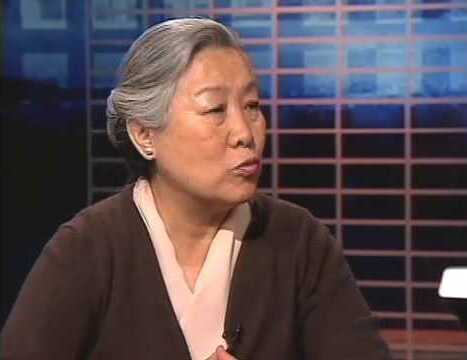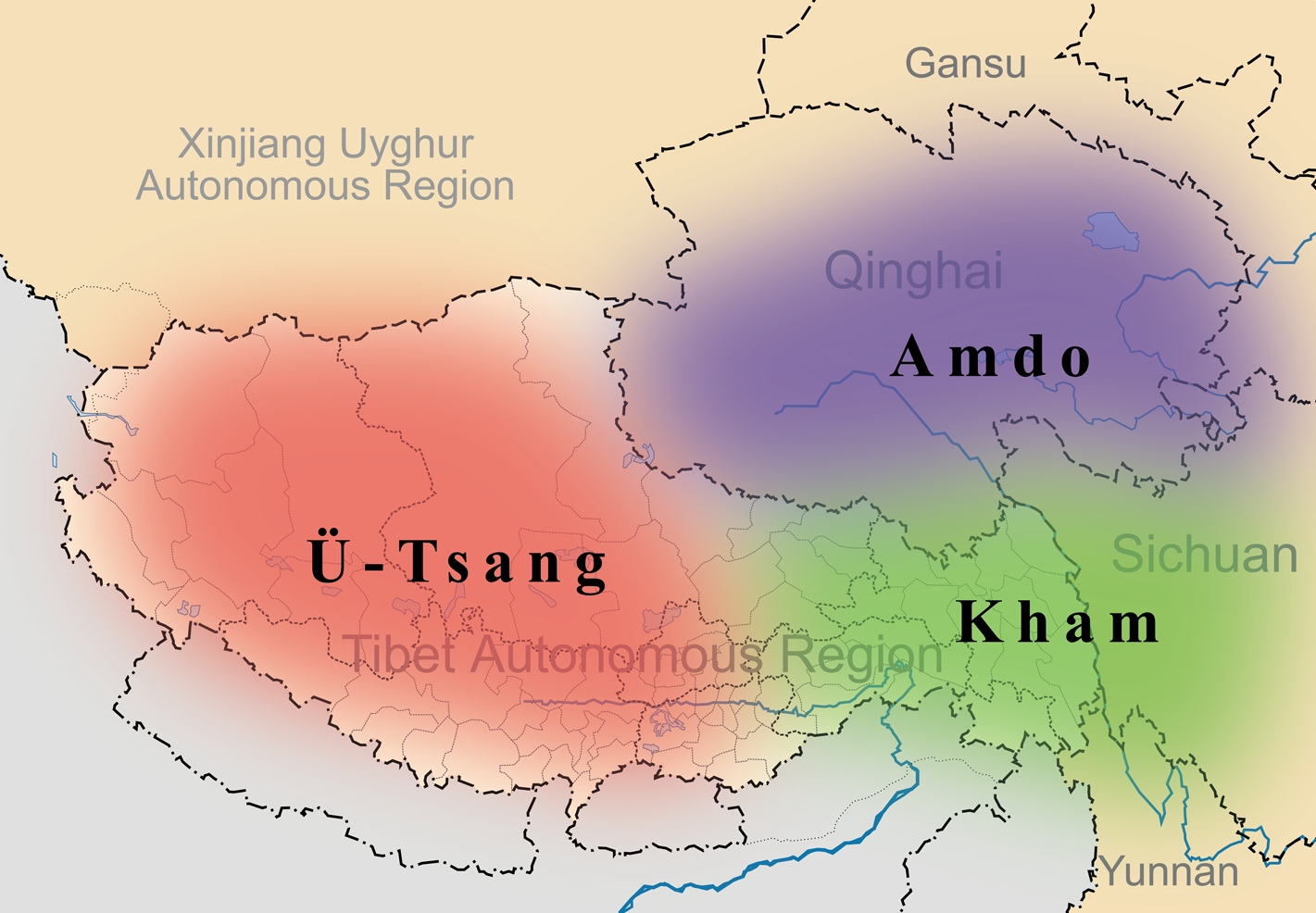|
Kashag
The Kashag (; ), was the governing council of Tibet during the rule of the Qing dynasty and post-Qing period until the 1950s. It was created in 1721, and set by Qianlong Emperor in 1751 for the Ganden Phodrang in the 13-Article Ordinance for the More Effective Governing of Tibet. In that year the Tibetan government was reorganized after the riots in Lhasa of the previous year. The civil administration was represented by Council (Kashag) after the post of Desi (or Regent; ''see: dual system of government'') was abolished by the Qing imperial court. The Qing imperial court wanted the 7th Dalai Lama to hold both religious and administrative rule, while strengthening the position of the High Commissioners.Seventh Dalai Lama Kelsang Gyatso ''The Dalai Lamas of Tibet'', p. 101. Thubten Samphel and T ... [...More Info...] [...Related Items...] OR: [Wikipedia] [Google] [Baidu] |
Dalai Lama
Dalai Lama (, ; ) is a title given by the Tibetan people to the foremost spiritual leader of the Gelug or "Yellow Hat" school of Tibetan Buddhism, the newest and most dominant of the four major schools of Tibetan Buddhism. The 14th and current Dalai Lama is Tenzin Gyatso, who lives as a refugee in India. The Dalai Lama is also considered to be the successor in a line of tulkus who are believed to be incarnations of Avalokiteśvara, the Bodhisattva of Compassion. Since the time of the 5th Dalai Lama in the 17th century, his personage has always been a symbol of unification of the state of Tibet, where he has represented Buddhist values and traditions. The Dalai Lama was an important figure of the Geluk tradition, which was politically and numerically dominant in Central Tibet, but his religious authority went beyond sectarian boundaries. While he had no formal or institutional role in any of the religious traditions, which were headed by their own high lamas, he was a unifying sym ... [...More Info...] [...Related Items...] OR: [Wikipedia] [Google] [Baidu] |
Sikyong
The () is the political leader of the Central Tibetan Administration, a Tibetan exile organisation also known as the Tibetan Government-in-Exile based on the 2011 Charter of Tibetans-in-exile. The title was created in 2012 after the 14th Dalai Lama decided not to assume any political and administrative authority as the head of the Tibetan Administration for Tibetans-in-exile. The current Sikyong is Penpa Tsering. The Sikyong is the political leader of the Kashag, part of the executive branch of the Central Tibetan Administration. This office should not be confused with the " Chairman of the People's Government of the Tibet Autonomous Region" (). The first directly elected Kalön Tripa was Lobsang Tenzin, the Samdhong Rinpoche, who was elected August 20, 2001. Based on the 13-Article Ordinance for the More Effective Governing of Tibet, Kashag should be composed of three temporal officials and one monk official. Each of them held the title of ''Kalön'' (; ), should seek appoint ... [...More Info...] [...Related Items...] OR: [Wikipedia] [Google] [Baidu] |
Central Tibetan Administration
The Central Tibetan Administration (, , ), often referred to as the Tibetan Government-in-Exile, is a non-profit political organization based in Dharamshala, India. Its organization is modeled after an elective parliamentary government, composed of a judiciary branch, a legislative branch, and an executive branch. The organization was created on 29 May 2011, after the 14th Dalai Lama rejected calls for Tibetan independence; following his decision to not assume any political and administrative authority, the Charter of Tibetans in Exile was updated immediately in May 2011, and all articles related to political duties of the 14th Dalai Lama and regents were repealed. On 29 April 1959, the then-Dalai Lama re-established the Kashag, which was abolished by the Government of the People's Republic of China on 28 March 1959. The Tibetan diaspora and refugees support the Central Tibetan Administration by voting for members of its parliament, the Sikyong, and by making annual financial ... [...More Info...] [...Related Items...] OR: [Wikipedia] [Google] [Baidu] |
Ganden Phodrang
The Ganden Phodrang or Ganden Podrang (; ) was the Tibetan system of government established by the 5th Dalai Lama in 1642; it operated in Tibet until the 1950s. Lhasa became the capital of Tibet again early in this period, after the Oirat lord Güshi Khan conferred all temporal power on the 5th Dalai Lama in a ceremony in Shigatse in 1642. The Ganden Phodrang accepted China's Qing emperors as overlords after 1720, and the Qing became increasingly active in governing Tibet starting in the early 18th century. After the fall of the Qing empire in 1912, the Ganden Phodrang government lasted until the 1950s, when the People's Republic of China (PRC) invaded Tibet. During most of the time from the early Qing period until the end of Ganden Phodrang rule, a governing council known as the Kashag operated as the highest authority in the Ganden Phodrang administration. The Ganden Phodrang was established by the 5th Dalai Lama and Tibet's patron Güshi Khan of the Khoshut, in 16 ... [...More Info...] [...Related Items...] OR: [Wikipedia] [Google] [Baidu] |
Dual System Of Government
The Dual System of Government is the traditional diarchal political system of Tibetan peoples whereby the Desi (temporal ruler) coexists with the spiritual authority of the realm, usually unified under a third single ruler. The actual distribution of power between institutions varied over time and location. The Tibetan term Cho-sid-nyi (; alternate spellings include ''Chhos-srid-gnyis'', ''Chhoe-sid-nyi'', and ''Chos-sid-nyi'') literally means "both Dharma and temporal," but may also be translated as "dual system of religion and politics." Because the ultimate ruler is the patron and protector of state religion, some aspects of the dual system of government may be likened to the Supreme Governance of the Church of England, or even to theocracy. However, other aspects resemble secularism, aiming to separate the doctrines of religion and politics. Under the Cho-sid-nyi, both religious and temporal authorities wield actual political power, albeit within officially separate insti ... [...More Info...] [...Related Items...] OR: [Wikipedia] [Google] [Baidu] |
Tibet
Tibet (; ''Böd''; ) is a region in East Asia, covering much of the Tibetan Plateau and spanning about . It is the traditional homeland of the Tibetan people. Also resident on the plateau are some other ethnic groups such as Monpa people, Monpa, Tamang people, Tamang, Qiang people, Qiang, Sherpa people, Sherpa and Lhoba peoples and now also considerable numbers of Han Chinese and Hui people, Hui settlers. Since Annexation of Tibet by the People's Republic of China, 1951, the entire plateau has been under the administration of the People's Republic of China, a major portion in the Tibet Autonomous Region, and other portions in the Qinghai and Sichuan provinces. Tibet is the highest region on Earth, with an average elevation of . Located in the Himalayas, the highest elevation in Tibet is Mount Everest, Earth's highest mountain, rising 8,848.86 m (29,032 ft) above sea level. The Tibetan Empire emerged in the 7th century. At its height in the 9th century, the Tibet ... [...More Info...] [...Related Items...] OR: [Wikipedia] [Google] [Baidu] |
Jetsun Pema (Tibet)
Jetsun Pema ( Tibetan: རྗེ་བཙུན་པདྨ་; Wylie: rje btsun padma; , born 7 July 1940) is the sister of the 14th Dalai Lama. For 42 years she was the President of the Tibetan Children's Villages (TCV) school system for Tibetan refugee students. Early life Jetsun Pema was born in Lhasa, on 7 July 1940. She went to India in 1950 and studied first at St. Joseph's Convent in Kalimpong and later at Loreto Convent in Darjeeling from where she completed her Senior Cambridge in 1960. In 1961, she went to Switzerland and then to England to do further studies. She returned to India in April 1964. Career At the behest of her elder brother, the 14th Dalai Lama, she became the President of the Tibetan Children's Villages (TCV), holding that position until her retirement in August 2006. She held this position for more than 42 years. Because of her efforts, today TCV projects includes five Children's Villages with attached schools, seven Residential Schools, seven Da ... [...More Info...] [...Related Items...] OR: [Wikipedia] [Google] [Baidu] |
14th Dalai Lama
The 14th Dalai Lama (spiritual name Jetsun Jamphel Ngawang Lobsang Yeshe Tenzin Gyatso, known as Tenzin Gyatso (Tibetan: བསྟན་འཛིན་རྒྱ་མཚོ་, Wylie: ''bsTan-'dzin rgya-mtsho''); né Lhamo Thondup), known as Gyalwa Rinpoche to the Tibetan people, is the current Dalai Lama. He is the highest spiritual leader and former head of the country of Tibet. He was born on 6 July 1935, or in the Tibetan calendar, in the Wood-Pig Year, 5th month, 5th day. He is considered a living Bodhisattva, specifically, an emanation of Avalokiteśvara in Sanskrit and Chenrezig in Tibetan. He is also the leader and a monk of the Gelug school, the newest school of Tibetan Buddhism, formally headed by the Ganden Tripa. The central government of Tibet, the Ganden Phodrang, invested the Dalai Lama with temporal duties until his exile in 1959. The 14th Dalai Lama was born to a farming family in Taktser (Hongya Village), in the traditional Tibetan region of Amdo (administra ... [...More Info...] [...Related Items...] OR: [Wikipedia] [Google] [Baidu] |
Tibet (1912-1951)
Tibet (; ''Böd''; ) is a region in East Asia, covering much of the Tibetan Plateau and spanning about . It is the traditional homeland of the Tibetan people. Also resident on the plateau are some other ethnic groups such as Monpa, Tamang, Qiang, Sherpa and Lhoba peoples and now also considerable numbers of Han Chinese and Hui settlers. Since 1951, the entire plateau has been under the administration of the People's Republic of China, a major portion in the Tibet Autonomous Region, and other portions in the Qinghai and Sichuan provinces. Tibet is the highest region on Earth, with an average elevation of . Located in the Himalayas, the highest elevation in Tibet is Mount Everest, Earth's highest mountain, rising 8,848.86 m (29,032 ft) above sea level. The Tibetan Empire emerged in the 7th century. At its height in the 9th century, the Tibetan Empire extended far beyond the Tibetan Plateau, from Central Asian's Tarim Basin and the Pamirs in the west to Yunnan ... [...More Info...] [...Related Items...] OR: [Wikipedia] [Google] [Baidu] |
29-Article Ordinance For The More Effective Governing Of Tibet
The 29-Article Ordinance for the More Effective Governing of Tibet ( zh, 欽定藏內善後章程二十九條) was supposed to be an imperial decree published in 1793 by the Qianlong Emperor in the Qing dynasty, the last imperial dynasty of China. Article 1 states that the purpose of Golden Urn is to ensure prosperity of Gelug, and to eliminate cheating and corruption in the selection process. Article 12 states that relatives of the Dalai Lama or Panchen Lama must not hold government positions, or participate in political affairs. There were three versions in the Tibetan language, and the original was not found. The corresponding text in Chinese was not listed as 29 articles, but parts and parcels of it were seen in various Memorial to the throne and decrees. In 1792, the Qianglong emperor published an article known as A Discourse on Lamas ( zh, 喇嘛說) that described the history of lamas and the reincarnation system. In it he described how the Golden Urn The Golden Urn refe ... [...More Info...] [...Related Items...] OR: [Wikipedia] [Google] [Baidu] |
Ministry (government Department)
Ministry or department (also less commonly used secretariat, office, or directorate) are designations used by first-level Executive (government), executive bodies in the Machinery of government, machinery of governments that manage a specific sector of public administration." Brockhaus and Efron Encyclopedic Dictionary, Энциклопедический словарь Брокгауза и Ефрона", т. XIX (1896): Мекенен — Мифу-Баня, "Министерства", с. 351—357 :s:ru:ЭСБЕ/Министерства These types of organizations are usually led by a politician who is a member of a cabinet (government), cabinet—a body of high-ranking government officials—who may use a title such as Minister (government), minister, Secretary of state, secretary, or commissioner, and are typically staffed with members of a non-political civil service, who manage its operations; they may also oversee other Government agency, government agencies and organiza ... [...More Info...] [...Related Items...] OR: [Wikipedia] [Google] [Baidu] |
The Age
''The Age'' is a daily newspaper in Melbourne, Australia, that has been published since 1854. Owned and published by Nine Entertainment, ''The Age'' primarily serves Victoria (Australia), Victoria, but copies also sell in Tasmania, the Australian Capital Territory and border regions of South Australia and southern New South Wales. It is delivered both in print and digital formats. The newspaper shares some articles with its sister newspaper ''The Sydney Morning Herald''. ''The Age'' is considered a newspaper of record for Australia, and has variously been known for its investigative reporting, with its journalists having won dozens of Walkley Awards, Australia's most prestigious journalism prize. , ''The Age'' had a monthly readership of 5.321 million. History Foundation ''The Age'' was founded by three Melbourne businessmen: brothers John and Henry Cooke (who had arrived from New Zealand in the 1840s) and Walter Powell. The first edition appeared on 17 October 1854. ... [...More Info...] [...Related Items...] OR: [Wikipedia] [Google] [Baidu] |







